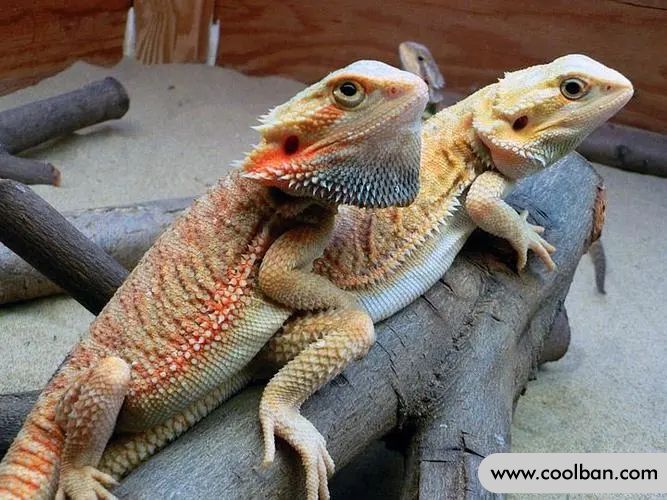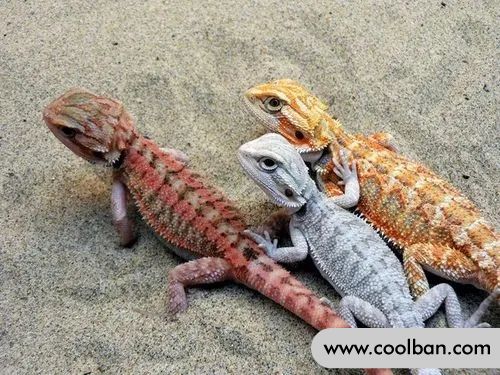What is the feeding environment of the bearded dragon lizard?
The maned dragon lizard is mainly distributed in the eastern half of Australia, with a total length of about 40cm and a maximum length of 49cm. There is a jelly-maned lion named for its translucent abdomen.
Morphological characteristics of the bearded dragon lizard
The ideal body length of an adult maned dragon is about 40 cm and can be as long as 55 cm. The body is strong and powerful, and the spiny scales on the side of the body grow in different directions. The back and nape are covered with spiny scales.
When threatened, the bearded dragon opens its mouth and opens its barbed throat to show gestures. There are two common maned dragon lizards: one has a translucent abdomen and jelly-shaped body skin, which is a jelly-maned lion; the other has few or no spine-like scales on its body surface, which is similar to ordinary leather, so it is called a leather-maned lion. .

Bearded dragon lizard breeding environment
Bearded dragons like to live in desert areas in the wild and come out during the day. They are heat-labile and cold-resistant reptiles. Therefore, if they are reared at home, the arrangement of the rearing environment should strictly follow their living habits in the wild.
Day Lighting/Heating: Full Spectrum Heated Spotlight (UVA spotlight) needs to be mounted on the "hot" end of the enclosure. The wattage of the lamp depends on the size of the enclosure and the distance of the lamp from the hot spot and your indoor temperature. Hot spots (where your maned lion basks on stone/wood/perch) should be at around 110-115°F (43-46°C), while the cooler side of the enclosure should be around 80-85°F (approx. 27~30℃). The temperature ladder is very important to the dragon's health, ensuring that the dragon's food is fully digested and helping his immune system function properly. You need a good thermometer to measure temperature accurately.
Bearded dragons also need UVB radiation, a light wave that stimulates reptiles to produce vitamin D3, which determines calcium absorption. There are two different sources of UVB. Direct sunlight is best if possible. The reason for direct sunlight is that UVB cannot penetrate glass and plastic. If you need labor UVB light source, we recommend you to use a 5.0 UVB lamp and a high quality mercury vapor spotlight (UVA), the light from the light should be able to illuminate the entire rearing environment without being blocked by glass, and at the same time, the light should not be placed more than 12 feet away from your dragon inches (about 30 cm).

Heating equipment: All kinds of heating lamps can be used. The maximum daytime temperature can start below 30 degrees in juveniles and below 25 degrees in adults. The temperature under the lamp can be between 30 and 40 degrees, which is enough temperature difference for them to choose in such a large rearing environment. If the temperature is above 20 degrees at night, there is no need to heat it. For an adult bearded dragon, it can be Heat at 15 degrees. Regardless of the size, it is enough to add to 20 degrees at night. It can also be equipped with heating pads or heating stones in winter, buried under the pads.
Lights should be turned off for 8-10 hours at night so your dragon can sleep and cool off. Most indoor temperatures won't drop to the point where they need to be warmed at night, but if yours falls below 60 degrees Fahrenheit (about 20 degrees Celsius), consider installing low-wattage night lights.
In terms of mat material, it is recommended that individuals over 8 inches (about 20 cm) use cleaned swimming sand, which is as economical, clean and safe as sieved boulders, with smooth particles without sharp corners. People under 8 inches, including newborns, can choose paper towels as bedding supplies.

Points for raising bearded dragons
The maned dragon's diet can be varied. It is important to note that when choosing food, consider the size of the individual and whether the bearded dragon will choke while eating.
The larvae need to be fed frequently, and new larvae can be fed crickets (details) and greens 3 times a day. Feed the larvae crickets and green vegetables twice a day. Young adults and adults can feed crickets and vegetables once a day, when green vegetables should make up 40 to 60 percent of their diet.
A variety of recipes are recommended and can include the following types:
Live insects: crickets, no longer than the distance between the eyes of the bearded dragon lizard, cockroaches, the same length as above, silkworms, tomato hawkmoth larvae, mealworms, etc.
